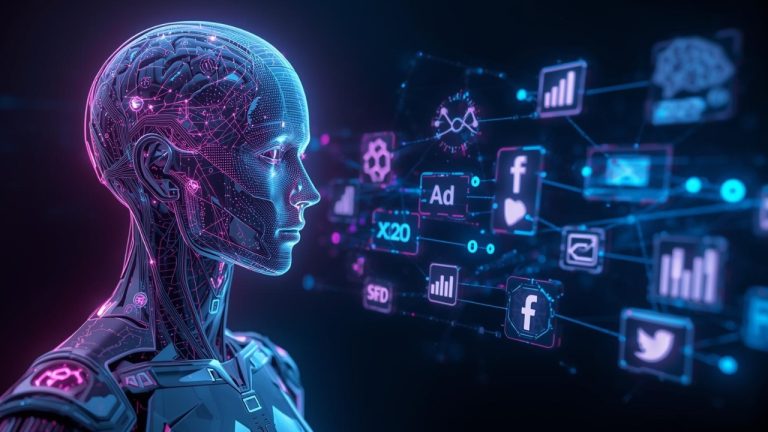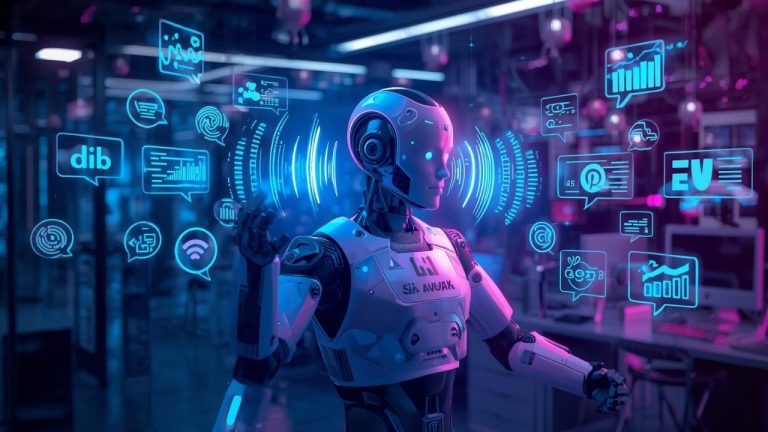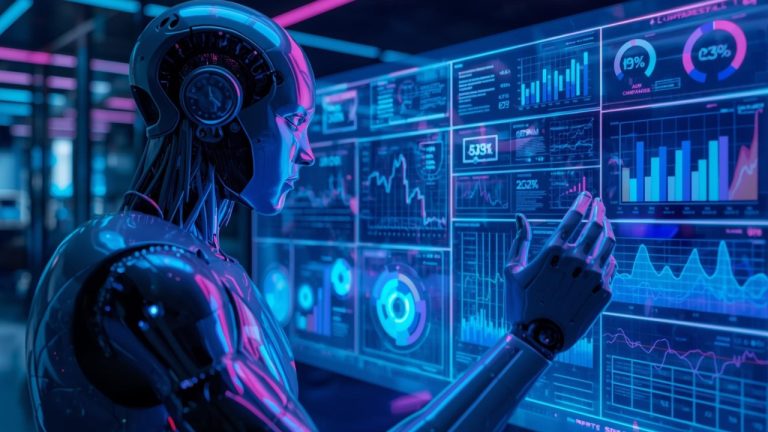
In today’s hyper-competitive digital landscape, understanding your customers isn’t just an advantage—it’s a necessity. Traditional marketing once relied on demographic assumptions and generalized buyer personas, but that approach no longer cuts it. Modern consumers expect personalization, precision, and relevance.
Enter Artificial Intelligence (AI)—the most transformative technology in customer targeting and segmentation to date. By analyzing massive amounts of data, recognizing patterns invisible to the human eye, and predicting future behaviors, AI is completely redefining how businesses identify, understand, and engage with their audiences.
In this article, we’ll explore how AI is revolutionizing customer targeting and segmentation, the techniques behind it, and why businesses that embrace this technology are dominating their markets in 2025 and beyond.
From Demographics to Dynamic Intelligence
Traditional customer segmentation relied on broad categories like age, gender, income, or location. While useful, these static variables couldn’t capture the complexity of modern consumer behavior. Two 30-year-olds living in the same city might have entirely different preferences, purchasing motivations, and online behaviors.
AI changes this by creating dynamic segmentation models that evolve with data. Instead of grouping customers by fixed traits, AI clusters them based on real-time actions—like browsing habits, purchasing frequency, engagement levels, and even emotional sentiment.
For example, an AI-powered system can identify that one customer often shops late at night after watching product videos, while another tends to purchase only during discount periods. Each would receive different messaging and offers tailored to their behavioral patterns, not just their demographics.
This shift from static to adaptive segmentation marks the foundation of AI’s revolution in marketing.
- Predictive Analytics: Anticipating Customer Needs
One of AI’s greatest strengths is predictive analytics—the ability to forecast customer actions before they happen.
By analyzing historical data, AI models can identify which customers are most likely to make a purchase, upgrade, or churn. For example, if a customer has stopped opening emails and reduced interactions on your website, AI can flag them as “at-risk” and trigger an automated retention campaign.
Similarly, predictive models can forecast seasonal trends or emerging customer interests. An e-commerce brand might discover that customers who buy running shoes in March are likely to purchase sportswear within two weeks. Armed with that insight, marketers can deliver timely offers that drive conversions effortlessly.
This proactive approach turns marketing from reactive guesswork into a science of anticipation.
- Micro-Segmentation for Hyper-Personalization
AI enables micro-segmentation, the process of dividing audiences into ultra-specific groups based on dozens or even hundreds of variables.
Instead of having five to ten target personas, marketers can now manage hundreds of micro-segments. AI automatically analyzes behavioral data—what people click, how long they stay on a page, which content they engage with—and continuously refines audience clusters.
For example, a fashion retailer might use AI to identify segments such as:
- “Eco-conscious shoppers who buy sustainable fabrics and follow ethical brands.”
- “Frequent impulse buyers influenced by social media trends.”
- “Loyal customers who purchase every new collection launch.”
Each group receives personalized experiences—unique recommendations, messaging tone, and visual style. This level of personalization increases engagement rates and fosters emotional loyalty.
- Real-Time Targeting Across Multiple Channels
AI doesn’t just segment—it acts in real time. Traditional targeting relied on pre-set audience lists, but AI-driven systems continuously analyze live data from multiple sources: websites, apps, social platforms, and CRM systems.
Imagine a customer browsing your website for a product but abandoning the cart. Instantly, AI can retarget them with a personalized email or social media ad featuring the exact item they viewed—sometimes even within minutes.
In 2025, AI has become the brain behind cross-channel marketing orchestration. It ensures that every touchpoint—from emails and ads to SMS and chatbots—delivers a consistent and relevant message based on where each customer is in their journey.
This real-time responsiveness creates seamless, data-informed experiences that drive conversions and build trust.
- AI-Powered Lookalike Modeling
Another major advancement in AI-driven targeting is lookalike modeling.
This process uses machine learning to identify new potential customers who share characteristics with your best-performing existing ones. For example, if your top buyers tend to engage with certain content or exhibit specific browsing behaviors, AI can scan large datasets to find users with similar digital footprints.
Platforms like Google Ads and Meta Ads use AI-based lookalike models to optimize targeting automatically. But in 2025, businesses are taking it even further—building custom lookalike audiences using proprietary AI systems trained on their own CRM data.
The result? Marketers can reach high-value prospects faster and with greater accuracy, dramatically improving ROI on advertising spend.
- Sentiment Analysis and Emotional Targeting
Modern marketing isn’t just about what customers do—it’s also about how they feel.
AI tools powered by Natural Language Processing (NLP) and sentiment analysis can interpret customer emotions from text, voice, or even visual cues. For instance, AI can analyze product reviews, social media posts, or chatbot conversations to gauge whether users feel positive, neutral, or frustrated about a brand.
Marketers can then use this emotional intelligence to fine-tune campaigns. If AI detects rising dissatisfaction, a company can respond with personalized offers or proactive support. Conversely, if positive sentiment spikes after a product launch, marketers can amplify that enthusiasm through social proof campaigns.
By understanding emotions, AI allows brands to connect with customers on a deeper, more human level.
- Behavior-Based Personalization
AI has enabled marketers to move beyond one-size-fits-all campaigns toward behavioral personalization.
Instead of sending everyone the same email or showing the same ad, AI systems analyze how individual users interact with content. For example:
- If a user watches 80% of a product demo video, AI might automatically send them a discount code to encourage conversion.
- If another user repeatedly visits a particular product page but hasn’t purchased, AI might offer a side-by-side comparison or customer review.
This precision ensures every piece of marketing feels tailor-made for the recipient. As a result, engagement rates, click-throughs, and customer satisfaction skyrocket.
- Ethical Targeting and Data Privacy
While AI offers immense power, it also raises questions about ethics and privacy. Consumers today are more aware of data collection practices than ever before, and trust has become a major differentiator.
In 2025, responsible marketers are adopting ethical AI frameworks. These include transparent data usage policies, anonymization techniques, and algorithms designed to eliminate bias in targeting.
AI-driven segmentation doesn’t mean exploiting data—it means using insights responsibly to deliver value. When customers feel understood rather than manipulated, they are more likely to remain loyal. Ethical AI not only ensures compliance with regulations like GDPR but also builds long-term credibility.
- The Role of AI in Predicting Lifetime Value
Customer targeting isn’t just about acquiring new leads—it’s about identifying high-value relationships.
AI can calculate a customer’s lifetime value (LTV) by analyzing purchase patterns, frequency, and engagement behavior. It then segments audiences based on profitability potential, helping marketers allocate budgets more effectively.
For instance, a subscription-based business can identify customers likely to renew and focus retention strategies accordingly, while deprioritizing low-engagement users. This data-driven approach ensures marketing dollars are spent where they matter most.
- AI-Powered A/B Testing and Campaign Optimization
A/B testing used to be a manual, time-consuming process. Marketers had to test one element at a time—headlines, images, calls to action—before drawing conclusions. AI has changed that completely.
Now, AI can run multivariate tests simultaneously, analyzing thousands of combinations in real time. It instantly identifies which version performs best for each segment and automatically adjusts campaigns for maximum effectiveness.
This constant optimization allows brands to refine messages faster and respond instantly to changing audience behaviors. Campaign performance improves continuously, without human delay.
- The Future: Self-Learning Marketing Systems
The next frontier in AI-powered targeting is autonomous marketing systems—platforms that learn, plan, and execute strategies with minimal human input.
These systems will not only segment and target customers but also create campaigns, test variations, and allocate budgets automatically. Marketers will shift from manual execution to strategic oversight, guiding AI systems with goals and creative direction.
This evolution doesn’t replace human marketers—it elevates them. With AI handling the complexity, humans can focus on storytelling, brand strategy, and innovation.
Conclusion: A Smarter, More Human Future
Artificial Intelligence is revolutionizing customer targeting and segmentation—not by replacing human marketers, but by enhancing their capabilities.
AI brings clarity to chaos, turning billions of data points into meaningful insights. It helps brands understand not just who their customers are, but why they behave the way they do.
The future of marketing lies in the harmony between AI’s analytical precision and human empathy. Together, they enable businesses to deliver experiences that are not only efficient and relevant but also deeply personal.
In the end, the brands that will thrive are those that use AI not just to target customers—but to truly understand them.







